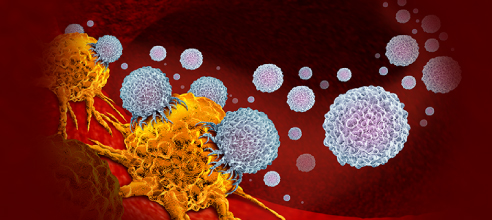Palladium Metal Powder: Uses, Properties, and Applications in Modern Industry
Palladium metal powder has garnered significant attention in various industrial applications due to its unique properties, such as excellent corrosion resistance, catalytic activity, and high melting point. As a precious metal, palladium is a rare and valuable element that plays an essential role in many sectors, including electronics, automotive, chemical processing, and more. This article explores the nature of palladium metal powder, its key properties, and its diverse uses in modern technology.
What is Palladium Metal Powder?
Palladium (Pd) is a silvery-white metal belonging to the platinum group metals (PGMs), which also includes platinum, rhodium, ruthenium, iridium, and osmium. Palladium metal powder is a finely divided form of palladium that is produced through various methods, including chemical reduction and mechanical grinding. The powder is characterized by its fine particle size and high surface area, making it ideal for use in applications that require enhanced catalytic properties, as well as in the production of advanced materials and electronics.
Properties of Palladium Metal Powder
Palladium metal powder is known for its unique combination of physical and chemical properties, which contribute to its wide-ranging industrial applications:
l Catalytic Activity: Palladium is widely used as a catalyst in various chemical reactions, especially in hydrogenation, dehydrogenation, and oxidation reactions. Its ability to facilitate these processes makes it indispensable in the production of fine chemicals, pharmaceuticals, and in automotive catalytic converters to reduce harmful emissions.
l Corrosion Resistance: Palladium is highly resistant to corrosion and oxidation, which makes it ideal for use in harsh environments, including those involving acidic or high-temperature conditions.
l High Melting Point: Palladium has a melting point of approximately 1,550°C (2,822°F), which makes it suitable for use in high-temperature applications, including in the aerospace and electronics industries.
l Excellent Electrical Conductivity: Palladium is a good conductor of electricity, which makes it an essential material in the production of electrical contacts and connectors, as well as in electronic components.
l Biocompatibility: Palladium’s biocompatibility makes it useful in medical applications, including dental materials and implants, where non-toxic and durable materials are required.
l Malleability and Ductility: Palladium metal powder can be easily manipulated and formed into thin films or used in powder metallurgy processes to create complex parts with precision.
Production of Palladium Metal Powder
The production of palladium metal powder typically involves one of the following methods:
l Chemical Reduction: Palladium salts, such as palladium chloride or palladium nitrate, are reduced chemically to form palladium metal powder. This process often involves reducing agents such as hydrogen gas or sodium borohydride.
l Electrolytic Deposition: Palladium can also be deposited as a fine powder through electrolysis, where palladium ions in solution are reduced onto a cathode surface, forming a fine powder.
l Mechanical Grinding: In some cases, bulk palladium metal can be mechanically ground into fine powder form through grinding or milling processes.
l Gas Condensation: Another advanced method involves the condensation of palladium vapors in a controlled environment to produce fine metal powders.
The size and distribution of particles in palladium metal powder are critical factors for its performance in specific applications. As a result, strict control over production processes is essential to achieve the desired particle characteristics.
Applications of Palladium Metal Powder
Palladium metal powder’s versatility makes it suitable for a wide range of applications across various industries. Some of the most significant applications include:
1. Catalysis in Chemical Processes
Palladium is one of the most widely used catalysts in the chemical industry. It is especially effective in hydrogenation reactions, where unsaturated hydrocarbons are converted into saturated hydrocarbons by the addition of hydrogen. Palladium metal powder plays a crucial role in the production of fine chemicals, such as pharmaceuticals, plastics, and agrochemicals.
Automotive Catalysts: Palladium is a key component of catalytic converters, which are used in automobiles to reduce harmful emissions. The palladium catalyst helps convert toxic gases like carbon monoxide, hydrocarbons, and nitrogen oxides into less harmful substances.
Hydrogenation: Palladium is used in the hydrogenation of alkenes and alkynes, helping to create more valuable products like margarine, lubricants, and various types of synthetic polymers.
2. Electronics Industry
In electronics, palladium metal powder is used in the production of various components, including connectors, switches, and capacitors. Its excellent electrical conductivity and resistance to corrosion make it a reliable material for ensuring the long-term performance of electronic devices.
Contact Materials: Palladium is widely used in the manufacturing of electrical contacts and connectors due to its superior electrical properties. Palladium’s resistance to corrosion ensures stable and long-lasting electrical connections.
Soldering Materials: Palladium-based alloys are used in soldering applications, where they offer improved thermal and electrical performance compared to traditional solder materials.
3. Aerospace and High-Temperature Applications
The high melting point and resistance to corrosion make palladium metal powder an ideal material for aerospace applications. It is used in the production of high-performance components, including turbine blades, heat exchangers, and other parts exposed to extreme conditions.
4. Medical and Dental Applications
Palladium’s biocompatibility and resistance to corrosion make it useful in medical devices and dental materials. Palladium-based alloys are used in dental crowns, bridges, and implants, providing strength and durability while avoiding allergic reactions.
5. Hydrogen Storage and Purification
Palladium metal powder is highly effective in hydrogen storage and purification applications. Palladium can absorb hydrogen gas, and this property is exploited in various hydrogen storage systems, where the metal powder is used to separate hydrogen from other gases in fuel cells.
6. Battery and Energy Storage
Palladium metal powder is also being explored for use in battery technology, particularly in rechargeable batteries and fuel cells. Its ability to conduct electricity and its stability in various conditions make it a promising candidate for next-generation energy storage solutions.
Environmental Impact and Recycling
Due to the rarity of palladium and its high cost, recycling of palladium metal powder has become a vital process in ensuring sustainable supply. Palladium can be recovered from used catalytic converters, electronic waste, and industrial by-products. The recycling of palladium not only reduces the environmental impact associated with mining but also helps conserve valuable resources.
Conclusion
Pd powder is a crucial material in modern industry, valued for its unique properties such as catalytic activity, corrosion resistance, and high melting point. Its applications span across various sectors, including automotive, electronics, chemical processing, and medical devices. As the demand for palladium continues to grow, its production and recycling will play an increasingly important role in meeting the needs of global industries. Understanding the properties and potential of palladium metal powder helps industries leverage its advantages to create innovative and sustainable solutions.
- Like
- Reply
-
Share
About Us · User Accounts and Benefits · Privacy Policy · Management Center · FAQs
© 2025 MolecularCloud



